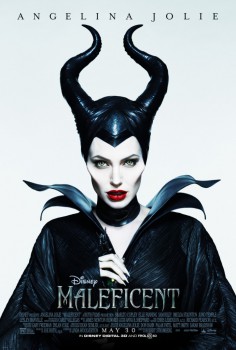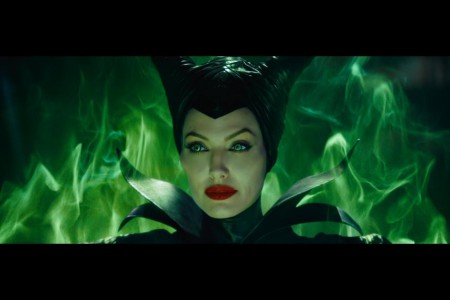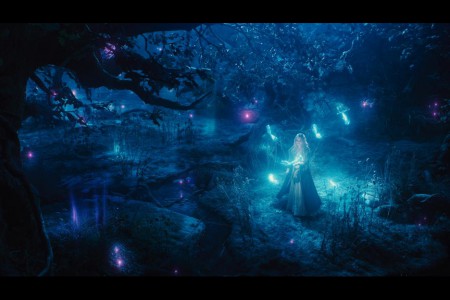“The mistress of all evil.” That’s what the green-skinned evil fairy of Walt Disney’s 1959 animated classic Sleeping Beauty referred to herself as. In that iconic film, Maleficent summoned “all the powers of hell” to curse a newborn princess because she was not invited to the baby’s christening. Her ruthless acts were challenged by three fairies and a handsome prince with a kiss powerful enough to break the curse.
In a world where fairy tales once again reign supreme at the box office with the potential to make millions, if not billions, Sleeping Beauty seemed destined to have a live action revival. After big success with darker twists on old classics like Tim Burton’s Alice in Wonderland and last years Oz the Great and Powerful, Disney is now putting a Wicked spin on the most iconic Disney villain of all.
The story of Maleficent is told by a narrator who reveals her identity by the end. Two neighboring kingdoms sit side-by-side at the brink of war. The human kingdom is lead by a cold and cruel king. The fair folk kingdom (aka The Moors) doesn’t have a unified leader because everyone trusts one another. The Moors is ripe with jewels and magic that the humans want, wherein lies the initial conflict.
When Maleficent was a young woman, she put her trust in a human boy named Stefan who captured her heart. After a deep betrayal, their paths take drastically different turns. Stefan becomes king as a result of his wrongdoing while Maleficent becomes a dark force within her land. Upon hearing the news that Stefan has had a daughter, Maleficent seeks to take her revenge by placing an unbreakable curse on the child. Curiosity leads her to watch over the girl as she is raised in the woods by three bumbling fairies. To her surprise, the child grows up to be a lot like young Maleficent, which further complicates the impending curse that can’t be stopped.
There’s much of Maleficent that is done right. The film’s greatest strength is star and co-executive producer Angelina Jolie. Her performance as Maleficent is so captivating and well done that it’s easy to lose yourself in her tale. Contrastingly, Elle Fanning is such a lovable Aurora that their scenes together have more chemistry than anyone could have foreseen. The world created for the film, which was designed by director Robert Stromberg, is interesting and captivating. If you notice any similarities to Pandora from Avatar, it’s probably because the first-time director was the production designer for that film as well.
There are several faults with the film, which no doubt accounts for the mostly negative reviews. There are multiple plot holes, which are easier to spot if you read the junior novelization that was based on the unedited screenplay. Compared to that, much of the backstory was removed and a few lines of dialogue make little sense with some of the deleted scenes (why does Maleficent refer to the three fairies as “rabble” when she loves everyone from the Moors?). These plot holes appear to be created to fix pacing issues, despite the fact that the film takes on a very slow pace between enacting the curse and the climax.
Despite its faults, I think Maleficent holds up well against Alice in Wonderland and Oz the Great and Powerful. Fans of films of that ilk will be enthralled with the world and characters created here and I doubt this is the last time we will see Disney make a dark live action fairy tale. Those who are enchanted by Walt’s classic version of Sleeping Beauty should enjoy some of the twists offered; especially when the tale drastically departs from the story you’re familiar with.
I give Maleficent 3.5 out of 5 spindles of a spinning wheel
Alex is currently watching and reviewing all of Disney’s films in chronological order. You can follow along here.



